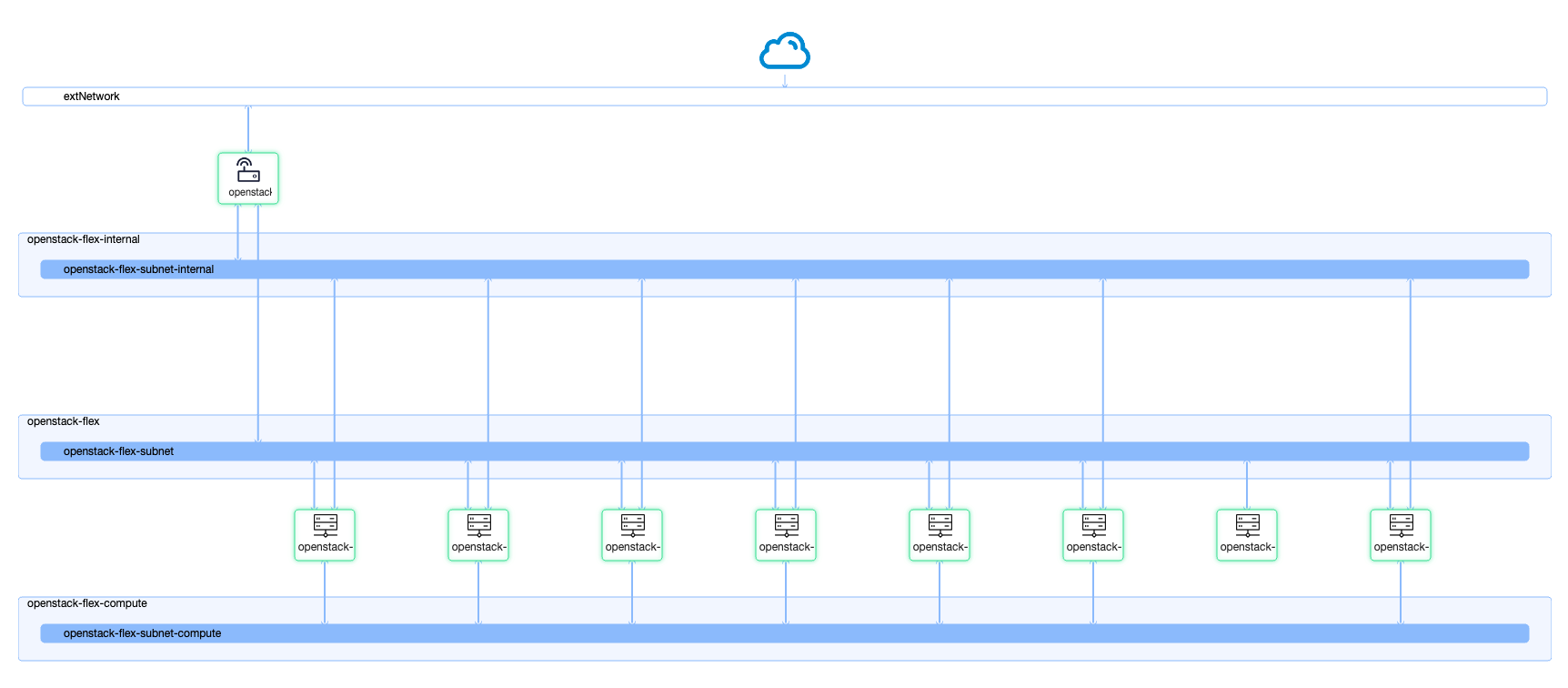Lab Build Demo
The information on this page is only needed when building an environment in Virtual Machines.
Prerequisites
Take a moment to orient yourself, there are a few items to consider before moving forward to help you get underway.
Clone Genestack
Note
Your local genestack repository will be transferred to the eventual launcher instance for convenience perfect for development. See Getting Started for an example on how to recursively clone the repository and its submodules.
Create a VirtualEnv
This is optional but always recommended. There are multiple tools for this, pick your poison.
Install Ansible Dependencies
Info
Activate your venv if you're using one.
Configure openstack client
The openstacksdk used by the ansible playbook needs a valid configuration to your environment to stand up the test resources.
An example clouds.yaml:
cache:
auth: true
expiration_time: 3600
clouds:
dfw:
auth:
auth_url: https://$YOUR_KEYSTONE_HOST/v3
project_name: $YOUR_PROJECT_ID
project_domain_name: $YOUR_PROJECT_DOMAIN
username: $YOUR_USER
password: $YOUR_PASS
user_domain_name: $YOUR_USER_DOMAIN
region_name:
- DFW3
interface: public
identity_api_version: "3"
See the configuration guide here for more examples.
Create a Test Environment
Abstract
This is used to deploy new infra on an existing OpenStack cloud. If you're deploying on baremetal this document can be skipped.
If deploying in a lab environment on an OpenStack cloud, you can run the infra-deploy.yaml playbook which will create all of the resources needed to operate the test environment.
Before running the infra-deploy.yaml playbook, be sure you have the required ansible collections installed.
Move to the ansible playbooks directory within Genestack.
Run the test infrastructure deployment.
Tip
Ensure os_cloud_name as well as other values within your infra-deploy.yaml match a valid cloud name in your openstack configuration as well as resource names within it.
Note
Pay close attention to the values for both kube_ovn_iface and kube_ovn_default_interface_name, they will need to match the desired interface name(s) within your test hosts!
Here's an example where all of the cloud defaults have been overridden to use known options within my OpenStack Cloud environment.
ansible-playbook -i localhost, infra-deploy.yaml -e os_image_id=Ubuntu-22.04 \
-e os_cloud_name=dfw \
-e os_launcher_flavor=m1.small \
-e os_node_flavor=m1.large
The test infrastructure will create the following OpenStack resources.
- Neutron Network/Subnet
- Assign a floating IP
- Cinder Volumes
- Nova Servers
The result of the playbook will look something like this.
- The first three nodes within the build playbook will be assumed as controllers
- The last three nodes will be assumed to be storage nodes with 3 volumes attached to them each
- All other nodes will be assumed to be compute nodes.
Running the deployment
The lab deployment playbook will build an environment suitable for running Genestack, however, it does not by itself run the full deployment. Once your resources are online, you can login to the "launcher" node and begin running the deployment. To make things fairly simple, the working development directory will be sync'd to the launcher node, along with keys and your generated inventory.
Tip
If you're wanting to inspect the generated inventory, you can find it in your home directory.
SSH to lab
If you have not set your .ssh config do not forget to put in your path for your openstack-flex-keypair. Your Ip will be present after running the infra-deploy.yaml.
